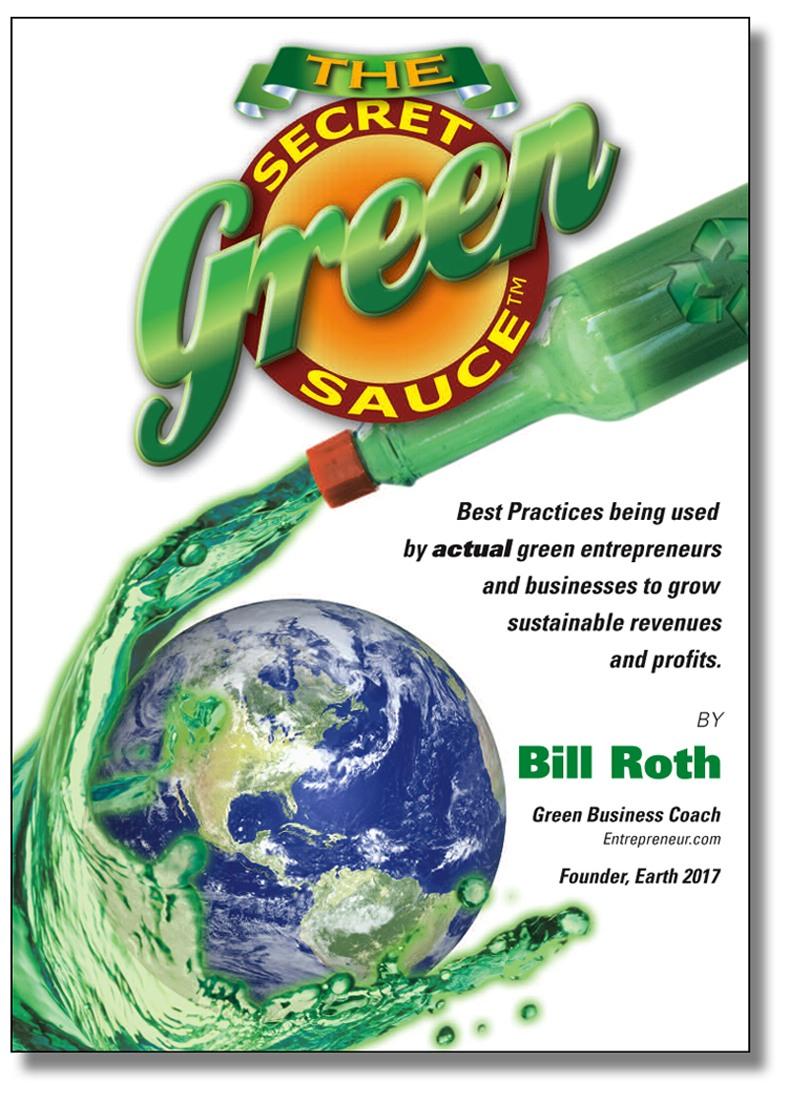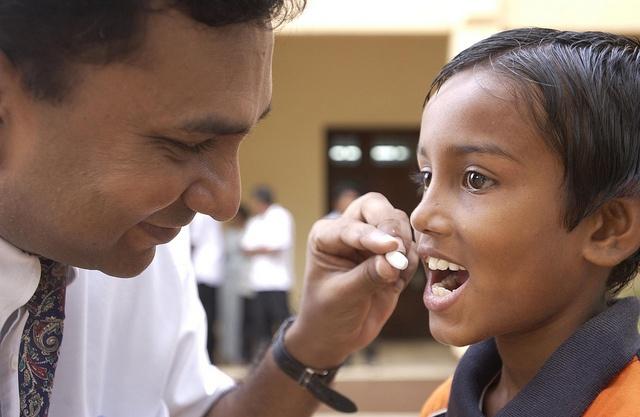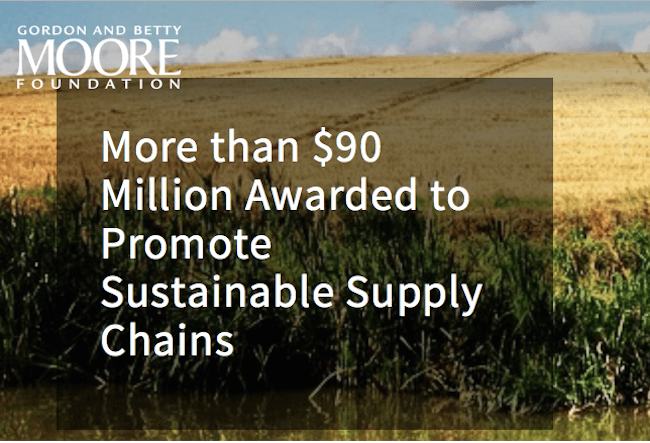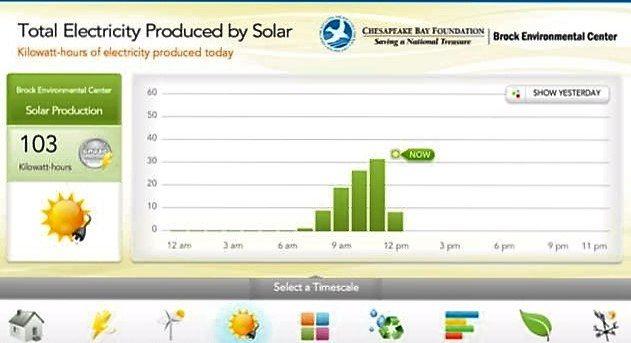How CSR Is Driving Purposeful Food Sales To Record Levels


The traditional food and beverage industry is in crisis. Pop, fizz, drink … WEIGHT GAIN is now a growing consumer belief. This shift in consumer perception has driven soda sales to a 30-year low. Traditional food and beverage brands have lost the mainstream consumer’s trust. Seventy-five percent of consumers believe food manufacturers are more focused on profits than human health.
This massive mistrust of mass-marketed foods is pushing consumers to abandon old buying habits. Increasingly, consumers are buying foods and beverages that are outside of mainstream food brands. Mass-marketed food brands now confront tepid sales growth. The sale of natural foods are achieving double annual sales growth.
The business question is: Will food brands realign with customer concerns, or will this industry continue to deliver food that taste greats, costs less, and is destructive to humans, animals and the environment?
Food brands are losing trust and market share
Twenty-five percent of the largest food companies have historically sold approximately half of what America eats and drinks. That ended in 2014. Now these branded food and beverages now account for 45 percent of sales. The CEO of Campbell Soup Co. admitted this new reality by saying, “We are well aware of the mounting distrust of Big Food.”
To-date the industry is responding with bandaid solutions. The good news is that companies like Kraft are removing artificial coloring from their food. There are daily news releases from companies like Taco Bell that announce product improvements gained from eliminating artificial colors, flavors and added trans fat. But the industry’s weak sales results suggest that these “do less harm” steps will not win back consumer trust or increase sales.
Consumers want foods that are healthy for them, animals and the environment
Consumer have moved their food procurement expectations beyond the removal of questinable food ingredients. They want foods that stand for something. They want food that has a purpose in addition to tasting great and being affordable. The three purpose based criteria sought by consumers are:
- Mission based. Consumers want their purchases to achieve a greater good.
- Repurposed ingredients. Consumers target achieving less food waste. They want unused food to be repurposed, for example, as compost.
- Ethical and sustainable. Food should not be produced by harming people, animals or the planet. This is driving increased purchases of grass feed beef. The search for more sustainable food is accelerating sales of plant based foods that have a lower environmental impact compared to animal based food. And food should absolutely not be produced using slave labor like foreign sourced seafood.
Consumers increasingly buy more and pay more for purposeful food
The consumer shift toward purposeful food offers a tremendous business opportunity. One of out three consumers will pay 10% more for purposeful food. This is fantastic news for food businesses seeking to offer both value and values. It is a tremendous example of how CSR enables pricing power in this age of global, mass marketed price discounting! These are the five food product attributes created through CSR that consumers expect if they are going to pay a 10% pricing premium:
- Pay workers fairly and provide safe working conditions
- Be GMO free
- Organic certification
- Be produced in a manner that reduces global warming
- Environmentally sustainable.
Exclusive video interview with Eric Pierce of New Hope Network
The consumer search for purposeful food, and the food industry’s slow pace of response, has opened the sales doors for manufacturers, grocery stores and restaurants that do offer purposeful food. My exclusive interview with Eric Pierce of New Hope Network taken at the Natural Product Expo West profiles the growing sales opportunity for businesses selling foods that are good for people, animals and the planet.
https://www.youtube.com/embed/eFJBS6elnto
GSK Allows More Developing Countries to Copy its Medicines


Access to pharmaceuticals in the developing world has long been a bone of contention between Big Pharma companies, the nations in which they are based, and public health agencies in developing countries.
While Americans were appalled at the shenanigans of Martin Shkreli -- the so-called 'Pharma Bro' -- for what many described as cruel price-gouging of lifesaving drugs, the conflict between drug prices and affordability has long festered resentment in poorer countries. A recent article in the Yale Journal of Medicine and Law found that despite global initiatives designed to increase access to pharmaceuticals, such as the 2001 Doha Declaration, their outcomes have actually complicated the distribution of drugs within poorer nations. As a result, nations including South Africa and India have long engaged in legal battles with many of the world’s leading pharmaceutical firms.
Bayer and the Indian government, for example, were entangled in a long legal dispute over the licensing of Nexavar, a cancer-fighting drug that costs over $5,000 a month — almost three times more than per-capita income in India. And while advancements in HIV/AIDS pharmaceutical research means the virus no longer imposes a death sentence, many developing countries are now coping with the costs of new drugs that are more effective in countering high blood pressure and cancer. Some countries have taken it upon themselves to copy drugs, causing a deep rift between the world’s rich and poor nations.
One of the world's largest pharmaceutical companies, GSK (GlaxoSmithKline), just took a bold step in its approach to managing its intellectual property. In an announcement made last week before a meeting with the United Nations’ High Level Panel on Access to Medicines, GSK’s CEO, Andrew Witty (who is a member of the panel), revealed that the company would enact new policies to expand access to its medicines worldwide.
GSK describes its new stance as a “graduated approach to filing and enforcing patents” based on a country’s economic climate. In Least Developed Countries (LDCs) and Low Income Countries (LICs), GSK has pledged that it will not file patents for any of its medicines, in turn giving license to generic drug manufacturers to make copies of those drugs. In Lower Middle Income Countries (LMICs), GSK will apply for patents but let them lapse after 10 years. For wealthier nations, it’s still business as usual. GSK says this policy will apply to all drugs that are on the World Health Organization’s (WHO) List of Essential Medicines.
Will more of Big Pharma companies fall into line? Roche, with almost $50 billion in annual revenues, says it has not filed for pharmaceutical patents in poorer countries for several years, with the result that over 22 million people in 55 countries have access to its HIV/AIDS drugs. Merck shares its intellectual property with the United Nations' Medicine Patent Pool (MPP), but some critics have dismissed that announcement as a public-relations stunt that will have little impact on access to medicines in poverty-stricken regions. The result is a vicious circle that will not stop anytime soon. Drug companies rely on patents as incentive to develop newer and more effective drugs, yet the costs are out of reach for many of the world’s poor in developed and developing nations alike.
But an approach like that of GSK’s could work. In addition to allowing lower prices, the company also funds programs in poorer nations that train health care workers on the ground. While better drugs are part of the good fight, having knowledgeable people who can teach citizens about preventative care and better health habits is a critical public health tactic that should not be dismissed. In turn Big Pharma, often painted as the bad guy in this ongoing controversy, could actually enhance its reputation and trust worldwide.
Image credit: Flickr/GSK
$90M Grant for Sustainable Food Will Link Nonprofits and Private Sector


One of the world's largest nonprofit conservation funders just pumped $90 million into a new sustainable supply chain initiative, kicking off a collaborative effort that could potentially result in a major shift in global food production. The new initiative, backed by the Gordon and Betty Moore Foundation, will focus specifically on "decoupling" food production from an unsustainable track in the seafood, cattle and soy sectors.
The sustainable food supply problem
In the early 2000s, the United Nations identified a "rising crisis" in global food supply. The Moore Foundation effort dovetails with the U.N., with a particular focus on an increasing demand for diets rich in protein, sugars and oils as the world's population grows.
The unsustainability of the current food production pathway is clearly evident if you look at the numbers compiled by the Moore Foundation:
- Agriculture now covers nearly 40 percent of the world’s ice-free land, uses 70 to 90 percent of all extracted freshwater, and comprises nearly 30 percent of global greenhouse gas emissions.
- Commercial agriculture causes half of all global forest loss.
- With 80 million tons of global fishery landings in 2012, overexploitation remains common in global fisheries.
- Global aquaculture has more than doubled since the mid-1990s and that brings with it ecological consequences.
Sustainable food supply solutions
Clearly, there is no easy fix, as the foundation is quick to explain:
"Transforming practices in these markets will require an unprecedented degree of cross-sector collaboration among nonprofits, business, governments and other stakeholders."
However, the Moore Foundation team believes there is an effective way to start turning things around. One aim of the foundation's new sustainable food supply effort is to create a strong platform for collaboration that enables commercial food producers to set goals and coordinate their efforts. The other part involves narrowing the main thrust of the effort to focus on major food global supply chains such as beef, soy, tuna, shrimp, and other "top traded commodities."
Beef has been a sustainability target for years, as has seafood production, but the inclusion of soy on that list seems a little surprising. However, the global "soy footprint" is a matter of concern for deforestation and other impacts that are typically associated with beef and other high-protein food production systems.
The new effort will support three Moore initiatives called Forests and Agriculture Markets, Conservation and Financial Markets, and Oceans and Seafood Markets.
The collaborators include Ceres, FishWise, Monterey Bay Aquarium Seafood Watch, National Wildlife Federation, New Venture Fund, Sustainable Fisheries Partnership, the Nature Conservancy, World Business Council for Sustainable Development and World Wildlife Fund.
The grant money will leverage the areas of expertise for each collaborator to accelerate the pace of changes that are already under way.
One area of focus involves scaling up more efficient ways to produce beef and soy without massive deforestation, particularly in key areas such as the Cerrado and Chaco regions of the Amazon. Funding will also go to improve both aquaculture and natural fishing practices.
From the finance end, the World Business Council for Sustainable Development will partner with Moore and the World Wildlife Fund to enlist "mainstream financial markets" in the effort to nudge commercial food production in the right direction, partly by advocating for disclosure of the impacts of unsustainable practices.
Can it work?
If that all looks like a tough sell, consider that until just a few years ago the trajectory of global energy growth was heading almost exclusively in the direction of fossil fuels and nuclear energy. Now it appears that wind and solar are beating both of those sectors on cost in addition to sustainability.
In the U.S., for example, the business sector is practically falling over itself to purchase clean power at a record-setting pace, thanks in part to the Business Renewables Center of the Rocky Mountain Institute.
A similar dynamic could come into play for food production, as sustainable solutions begin to yield bottom-line results for major commercial producers and their customers.
Image (screenshot): via Gordon and Betty Moore Foundation.
3p Weekend: Is Your Candidate a Climate Denier?


With a busy week behind you and the weekend within reach, there’s no shame in taking things a bit easy on Friday afternoon. With this in mind, every Friday TriplePundit will give you a fun, easy read on a topic you care about. So, take a break from those endless email threads and spend five minutes catching up on the latest trends in sustainability and business.
The presidential primaries are heating up, and 25 states and territories have yet to cast their ballots. The Republican race has dwindled down from a staggering 17 candidates to three remaining holdouts: Businessman Donald Trump, Texas Sen. Ted Cruz and Ohio Gov. John Kasich. On the Democratic side, some are already declaring victory for former Secretary of State Hillary Clinton, but her opponent, Vermont Sen. Bernie Sanders, has made clear he's not going down without a fight.
It likely seems as if every pol and pundit has an opinion on who you should vote for and why. But the great thing about democracy is that there's only one voice that matters when you head to the ballot box: yours. And as such, it's important for each of us to be informed about the candidates' stances on the issues that matter to us.
While we don't advocate single-issue voting, we know climate issues are of great interest to our readers, so we thought a quick break-down was in order. To help you make an informed decision when your state heads to the polls, spend a few minutes learning each of the candidates' stances on climate change -- as explained on their campaign websites and in the media.
Hillary Clinton (D)
On her campaign page: "I won’t let anyone take us backward, deny our economy the benefits of harnessing a clean energy future, or force our children to endure the catastrophe that would result from unchecked climate change," former U.S. Secretary of State Hillary Clinton said last year during COP21, as quoted on her campaign page.Clinton devotes an entire page on her campaign website to climate and energy. On it, she pledges to make the following happen within 10 years of taking office:
- Generate enough renewable energy to power every home in America, with half a billion solar panels installed by the end of her first term.
- Cut energy waste in American homes, schools, hospitals and offices by a third and make American manufacturing the cleanest and most efficient in the world.
- Reduce American oil consumption by a third through cleaner fuels and more efficient cars, boilers, ships and trucks.
2015: Hillary Clinton was quick to applaud the Paris climate agreement after its passage in December, saying: "I applaud President Obama, Secretary Kerry and our negotiating team for helping deliver a new, ambitious international climate agreement in Paris ... We cannot afford to be slowed by the climate skeptics or deterred by the defeatists who doubt America's ability to meet this challenge."
January 2016: At a campaign speech in Nevada in January, Clinton said: "We've got to combat climate change, because it is real." She went on to give a suggestion to fellow candidates who "don't know" whether climate change is real because they're "not scientists," saying: "Go talk to a scientist and actually listen."
March 2016: This month, Clinton fired back at opponent Bernie Sanders' claims that she accepts too many campaign contributions from fossil fuel companies to be serious about climate action. "I do not — I have money from people who work for fossil fuel companies," she told a Greenpeace activist on Thursday, distinguishing between contributions from energy companies themselves and their employees. "I am so sick of the Sanders campaign lying about me. I'm sick of it."
Bernie Sanders (D)
On his campaign page: "The scientists are virtually unanimous that climate change is real, is caused by human activity and is already causing devastating problems in the United States and around the world," Vermont Sen. Bernie Sanders wrote on his campaign page. "And, they tell us, if we do not act boldly the situation will only become much worse in years to come in terms of drought, floods, extreme storms and acidification of the oceans ... While fossil fuel companies are raking in record profits, climate change ravages our planet and our people – all because the wealthiest industry in the history of our planet has bribed politicians into ignoring science."The Independent senator also devotes an entire page on his campaign website to climate issues, along with a custom hashtag #PeopleBeforePolluters. On it, Sanders lays out five policy initiatives aimed at helping us curb climate change, each with another page explaining in more detail:
- Reclaim our democracy from the billionaire fossil fuel lobby (read more here)
- Accelerate a just transition away from fossil fuels (read more here)
- Invest in clean, sustainable energy (read more here)
- Revolutionize our electric and transportation infrastructure (read more here)
- Lead the international community to solve climate change and prevent international conflict (read more here)
Sanders' climate plan has received accolades from the likes of Bill McKibben, Greenpeace U.S. Executive Director Annie Leonard and Sierra Club Executive Director Michael Brune. You can read the full plan here.
In the media:
October 2015: Sen. Bernie Sanders made waves in the first Democratic debate in October when he called climate change the "biggest national security threat" facing the United States.
December 2015: Sanders praised the Paris climate agreement, but said it did not go far enough to tackle climate change: "The planet is in crisis. We need bold action in the very near future and this does not provide that," he said in a statement.
January 2016: At a town hall meeting at Roosevelt High School in Iowa in January, Sanders was asked a question by a teenage climate skeptic: "I haven't seen any actual scientific evidence that global warming is actually happening," she said. "It's only very recent. So I'd like to know why you think it's happening." He responded politely but firmly: "You're wrong ... It is already causing devastating problems in our country and the world. That is what the scientists are saying."
February 2016: After coming away with a victory in New Hampshire, Sanders used his victory speech to double-down on his stance on climate, saying "It is already causing devastating problems in this country and around the world."
Donald Trump (R)
On his campaign page: New York businessman Donald Trump does not mention climate change on his campaign page. Strangely enough, the former host of NBC's "The Apprentice" doesn't have a page for energy either.In the media:
December 2015: In an appearance on "Fox and Friends" in December, Donald Trump said he would not have attended the Paris climate talks if he were president, adding that he "didn't want to say aloud" what world leaders really think of President Obama. "We have a president that doesn't know what he's doing," Trump said. "And all he's worried about is climate change. He thinks climate change is something that's going to kill us and it's not going to kill us at all. It's not going to kill us."
March 2016: Trump doesn't seem to have warmed up to the idea of man-made climate change. In a March interview with the Washington Post, he said: "I think there’s a change in weather. I am not a great believer in man-made climate change."
Ted Cruz (R)
On his campaign page: Texas Sen. Ted Cruz does not mention climate change on his campaign website, but he gives us a good look at how he'd approach energy. He calls for a "Great American Energy Renaissance," which includes immediate approval of the Keystone XL Pipeline and "other similar infrastructures."Cruz adds: "We need an all-of-the-above energy approach that embraces the bountiful resources in this land — from oil to natural gas to ethanol. We need to open up abundant and affordable gas and electricity resources."
The senator also appears poised to roll back environmental regulations set in motion under President Barack Obama: "A Cruz administration will end the EPA regulations like the Waters of the U.S. rule and the Clean Power Plan that burden small businesses and farmers." He also plans to eliminate the Department of Energy, calling it "the Washington Cartel."
In the media:
December 2015: In an interview with NPR in December, Sen. Cruz said: "The scientific evidence doesn't support global warming. For the last 18 years, the satellite data -- we have satellites that monitor the atmosphere. The satellites that actually measure the temperature showed no significant warming whatsoever."
January 2016: Cruz continued to insist that satellite data debunks climate change, saying in New Hampshire that 2015 was, in fact, not the hottest year on record as scientists claim. “The satellite and weather balloon data do not show 2015 as a record year."
John Kasich (R)
On his campaign page: While he doesn't specifically mention climate change, in a refreshing departure from his Republican cohorts, Ohio Gov. John Kasich does make mention of sustainability:"Low-cost, reliable energy is the backbone of America’s economy," Kasich wrote on his campaign page. "Too often we have seen America’s energy policies swing wildly between cheap generation and environmental protection, as if those were our only choices. Energy policies that only focus on low costs keep us from seeking technological breakthroughs that can improve efficiency and sustainability. An exclusive focus on unnecessary environmental regulation drives up energy costs and keeps energy independence out of reach. America needs balance."
As part of "The Kasich Plan," the Ohio governor pledges to make America energy independent -- which, he says, includes approving the Keystone XL Pipeline. Kasich also plans to "diversify" the U.S. energy mix and remove "unreasonable barriers" to the development of new technologies like high-capacity batteries, fuel cells and the high-efficiency “smart” electricity grid, his campaign page explains.
In the media:
October 2015: At a town hall meeting in Cedar Rapids, Iowa, in October, Gov. Kasich addressed his stance on climate change: “Do I believe there is something called climate change? I do. Do I think that human beings affect it? I do. How much? Not enough for me to go out and cost somebody their job. I don’t know that that’s why you have flooding. I just don’t know enough about it.”
February 2016: At a town hall meeting in Vermont, Kasich said: “I know that human beings affect the climate." He added that he didn’t know “how much individuals affect the climate, but here’s what I do know: I know we need to develop all of the renewables, and we need to do it in an orderly way.” The statements show progress, but when asked about the COP21 summit in December, Kasich replied: "They should have been over there talking about ISIS."
March 2016: In the most recent Republican debate, Kasich again turned to climate: “I do believe we contribute to climate change,” he said. “We want all the sources of energy. We want to dig coal but we want to clean it when we burn it. We believe in natural gas, we believe in nuclear power, and you know what else I believe in? I happen to believe in solar energy, wind energy, efficiency, renewables.” He later clarified that “we don’t know how much humans actually contribute.”
Image credits: 1) Flickr/Theresa Thompson 2) Flickr/U.S. Embassy 3) Flickr/Phil Roeder 4) Flickr/Gage Skidmore 5) Flickr/Gage Skidmore 6) Flickr/Alex Hanson
Another Climate Change Denier on Big Coal's Payroll


Climate change deniers that appear on Fox News often cite the argument that the climate has always changed. When Chris Horner, a lawyer in Washington, D.C., appeared on Fox News in 2014 he said, “Climate changes. It always has. It always will.”
But there’s a big problem with Horner appearing regularly on Fox News as a so-called climate change expert. He is bought and paid for by coal companies. Bankruptcy filings reveal that he is paid as a “regulatory counsel” for the coal company, Alpha Natural Resources (ANR). The Wall Street Journal reported that ANR paid Horner $18,600 before it filed for chapter 11 last summer. The Center for Media and Democracy (CMD) reported that recent filings it reviewed reveal that Horner has been paid “at least $12,000 more since then, taking the total amount to at least $30,600 for the nine month period between May 2015 and Jan 2016.”
CMD summed up what has been discovered so far about Horner’s work with climate denial groups funded by the coal industry. In addition to serving as “regulatory counsel” for ANR, Horner has also served other groups, including:
- Senior Clinical Attorney for Free Market Environment Law Clinic, which paid him $110,00 in 2014 and is funded by ANR.
- Senior Fellow at the Competitive Enterprise Institute, which received funding in 2009 Murray Energy and Massey Energy.
- Participant in the American Legislative Exchange Council’s (ALEC) Energy, Environment and Agriculture Task Force, which is funded by a number of energy companies, including ANR, Peabody Energy and Arch Coal.
- An expert for Heartland Institute, which also receives funding from ANR.
While the relationship between the climate change denial practiced by Horner and groups like ALEC is exposed, some coal companies, in addition to ANR, are filing for bankruptcy. Or as CMD stated, the U.S. coal industry is “increasingly collapsing.” What is revealed in bankruptcy filings is that, like ANR, coal companies are funding climate change denial. The coal company Arch Coal gave funding to the Energy & Environment Legal Institute (E&E Legal), where Horner serves as a senior legal fellow. Arch Coal and ANR also funding ALEC, which engages in heavy climate change denial and ALEC has tried to block the Obama-administration’s Clean Power Plan, which is on hold while being reviewed by the Court of Appeals, from being implemented.
Lee Fang, writing for The Intercept, reported on ANR secretly financing groups and organizations that deny climate change. His article mentioned Chris Horner. A more recent article cited a conversation he had with Kevin Crutchfield, the CEO of ANR. In Fang’s words, Crutchfield “was unapologetic, and told him, “It should come as no surprise to you that we support those with like-minded philosophies.”
Fang asked Crutchfield how much he gave to Horner and other climate change denial groups. “I don’t know the numbers. We believe in transparency,” he said. “It doesn’t matter what I believe because the bus has left the station seems like.” In other words, Crutchfield isn’t talking about ANR’s funding of climate change denial.
Coal is a major contributor to climate change and the U.S. is one of the world’s two largest producers and consumers of coal, according to the National Resources Defense Council (NRDC). “If coal-fired power plants currently under development in these two countries are built as planned they will lock us into a future of devastated landscapes, damaged public health, and dangerous global warming,” the NRDC states.
Coal is a dirty fossil fuel that is contributing to climate change and one that needs to be kept in the ground. Coal companies are clearly not doing their due diligence to inform the public about their role in climate change.
Black Kid Nearly Arrested Trying to Cash Scholarship Check


This series of tweets exemplifies the uphill battle poor people of color have to climb to overcome inequality. The student was attending the first week of a 13 month boot camp. At lunch he went to a check cashing store (with a fee of 10 percent!) to cash the scholarship check he received as student in the course. The employee at the check-cashing place thought his money order was fake and held it and his ID while she called the cops, who proceeded to harass and threaten him until his teacher showed up to defend him.
Scholarships are a great start to offering people of color a hand up, but the systematic challenges they face: poverty, being unbanked, untrusted and harassed by law enforcement are all too typical.
Tools like twitter and other social media platforms make it easy to share everyday stories of inequality. Awareness is the first step toward systematic change.
Farmers Quit Corn; Grow Solar Power


One of the arguments used against solar power deployment is the amount of space needed for all of those solar panels. Although one study has shown that 0.6 percent of all land in the U.S. would be needed to completely electrify the country, the fight still goes on, even as solar and wind power technologies continue to increase in efficiency while decreasing in costs.
The fight is also occurring in counties across the U.S., as landowners and farmers seek new ways to generate revenue. Most of rural America has missed out on the economic revival that has conjoined technology and urbanization in many cities, so these counties are also seeking new ways to generate tax revenues. Farmers, of course, have also taken a hit due to the ongoing slump in global commodities.
The controversy over farmers having the right to sign contract with solar and wind power companies is now taking center stage in North Carolina.
The combination of the state’s Renewable Energy Portfolio Standard (REPS), which requires utilities operating in the state to generate some electricity from renewables, along with its booming tech culture, has turned the Tar Heel State into a solar powerhouse. In fact, the Solar Energy Industries Association (SEIA) says North Carolina ranks third in the nation amongst U.S. states in total solar capacity. Last year, the installation of over 1,100 megawatts of solar power placed North Carolina in second nationally in new solar generation.
And much of this power is generated in rural counties across the state, from the northern border with Virginia to along the South Carolina state line. According to Solar Strata, one company that is riding North Carolina’s solar boom, these new solar farms are appearing on farmland where crops such as tobacco, peanuts, cotton and corn can no longer earn enough money for farmers to keep their land. Other sites are appearing on fallow land that has not been farmed in years. Companies such as Solar Strata pay rent to these farmers, with contracts that often last as long as 20 years. As quoted by one farmer who was interviewed by Joe Ryan of Bloomberg, “It gives me a way to keep the farm . . . and pass it to my grandchildren.”
Not everyone in North Carolina is pleased with farmland being converted from tobacco farms into solar farms. One NC state senator, Bill Cook, a Republican from Beaufort County, attacked the idea, saying that solar’s outcome is “pretty well ruined” land that was once used for farming. Of course, while bemoaning this loss of land, Cook has been quick to tout road projects underway in his senate district, lost land notwithstanding. Clean energy advocates retort that issues about which Cook has complained, such as soil compacting from solar farms’ gravel roads, and the use of herbicides (which would have been used on those farms anyway), are insignificant problems. Meanwhile, the NC Sustainable Energy Association has said that out of the 8.4 million acres of farmland in the state, the 100-plus solar farm projects have taken up no more than 0.12 percent of that land.
One region that could take a few notes from North Carolina’s success is in California’s San Joaquin Valley, home to the state’s fifth largest city, Fresno. While this past year has seen ample rain and snowfall, the valley is still reeling from years of drought. But the need to create energy for other growing cities such as Visalia, Merced, Modesto and Bakersfield has started to pit farmers against clean energy advocates. Current efforts, and organizations seeking to ramp up clean power generation, are fledgling at best. But more farmers in central California are considering leasing their land for solar farms, which stirs up almost as much angst as the High Speed Rail project. Considering the fact that the cost of solar continues to spiral down, and future clean energy requirements due to California’s renewables mandate, watch for solar leases in this region to become a much more viable option. After all, renting one’s land is much more palatable than eminent domain.
Image credit: Strata Solar
Virginia's Coastline Hosts the Newest 'Living Building' in the World


An environmental education center off Virginia’s coast is set to be certified as one of the first structures in the mainland U.S. to achieve the most advanced measure of sustainability in the built environment: a “Living Building.”
That honor is to be conferred upon the Chesapeake Bay Foundation’s “Brock Environmental Center” by the International Living Future Institute. As a Living Building, the center, located in Virginia Beach, is be permitted to supply all of the water and energy it needs while composting all of its building and human waste.
The center is an encore investment of the Foundation’s Philip Merrill Environmental Center headquarters environmental center in Annapolis, Maryland. That structure was the first to achieve “LEED Platinum” certification in the world in 2001. So this extends an impressive pedigree.
Living Buildings are how architects and other design and building professionals are raising the ‘bar’ on structures that actually enhance human health along with the local habitat and ecology. Joan and Macon Brock, as well as many other donors, took aim at the Living Building certification when they contributed $11 million to pay for the Brock center. While precious few organizations can afford, much less justify, these types of investments, the Foundation and their donors consider it an investment in the future of civil society.
“Thus far, the center has generated 80 percent more power than it’s used,” said Gregory A. Mella, the leader of SmithGroup JJR architects who designed both structures for the Foundation and shared up-to-date energy and water data at the first-ever Resilient Virginia Conference in Richmond last month. That data can be monitored in real-time on the center’s dashboard here. See the accompanying snapshot for the solar energy produced up to the Noon hour on March 30, 2016.
Because the city of Virginia Beach requires all buildings to be connected to the grid for water, sewer and electric, the center is tied to the grid. But, as Foundation Vice President Mary Tod Winchester asserted, “we rarely use it.”
“We do use the grid for our power storage as the building is designed to use all of its own energy first,” said Chris Gorri, the center’s on-site manager. “However, we generate more energy than we need and send our excess to the grid which powers the homes and businesses around us.” That said, its typical electricity bill is $17.19 – just for fees.
The center is the first commercial building in the U.S. to receive a precedent-setting permit which allows the center to capture and treat rainwater for all uses at the facility, including drinking water. Cisterns can collect and hold 3,000 gallons of water. After treatment it meets all the relevant standards set by the EPA’s Safe Water Drinking Act and permitted by water and public health agencies in Virginia.
One hundred and sixty-eight rooftop solar panels and two wind turbines power the entire facility. The orientation of the 10,500 square-foot structure maximizes natural light throughout the year and enables ambient wind currents along with the shaded porch to provide most of the natural cooling needed during Virginia’s hot and humid summer months.
Composting toilets process all waste which is turned into compost and used on site. The urine from the toilets is collected onsite and brought to an offsite treatment plant where it is made into green fertilizer and sold at local nurseries.
With the help of the Trust for Public Land, the Foundation took aim at the property, slated for development of 1,110 living units, first by partnering with the City of Virginia Beach to purchase the bankrupted property from Wells Fargo Bank. Rather than allow it to be sold to another developer, Virginia Beach agreed to purchase 108 acres and designate it a “passive” park. The foundation purchased 10 acres for its center.
And what better (or more challenging) place for such a demonstration project than one of the most risk-prone, flood-plain, coastal environments on any U.S. coast? It is there, amid the marshes dotting the Virginia Beach region, where the sea level is projected to rise at least one meter by 2100.
Winchester said its leaders debated whether it made sense to build the center in midst of the risks. But in a “design charrette” with Jason McLennan, CEO of the International Living Future Institute; and, at the time, the then-chair of the U.S. Green Building Council, Elizabeth Heider, all of the stakeholders unanimously recommended it pursue the site because of the educational potential of how to deal with those risks - build a model facility and use it as a teaching tool through its education programs.
Greg Mella, the lead architect, explained that to earn the Living Building Challenge certification the center would need to perform up to International Living Future Institute’s standards for 12 months. By the 6th month however – last October -- heavy rains and massive flooding along the Mid-Atlantic coast spawned by Hurricane Joaquin delivered the test of what was considered a 100-year storm. At its peak, Joaquin was a Category 4 hurricane.
As the rains ceased, the water level had risen about six feet above sea level leaving about six inches of standing water at the center’s base. That was no problem because the main floor was built almost 14 feet above sea level.
“We’re getting more 100-year storms than we ever have so we designed and built this to survive a greater than 100 year-storm surge,” Winchester said.
The Future Living Institute carefully audited the center last week to ensure all the criteria were met, while also reviewing all the documentation including the Institute’s “Red List” of prohibited building materials and chemicals designated as harmful to living creatures, including humans, or the environment. The 12-month test period concluded Thursday, March 31. The certification is expected to be awarded in May at the Living Building Conference in Seattle.
"The Brock Center illustrates what can be done by committed organizations, working with the public sector, to ensure that energy production, water management, and waste handling not only have less environmental impact but actually give back to the surrounding communities and their ecology,” said Annette Osso, Co-founder and Managing Director of the Resilient Virginia nonprofit.
To hear them articulate the living examples set by the center, go here for a short video of Greg Mella and here for a short video of Mary Tod Winchester. Go here for a video tour of the center, including an aerial view of the site.
Really, Chipotle? A Better Burger?


They say you should not kick anyone when they are down, but unfortunately for Chipotle, the burrito giant is doing a fine job kicking itself. The company has been nailed as its sustainability and animal welfare claims have not stood up to scrutiny. Its year-long food contamination nightmare has driven some shareholders to demand that executive pay —which currently is the highest in the restaurant industry -- be tied to sustainability performance.
Now Chipotle wants to enter the burger market, as reported by many business news outlets earlier this week. It turns out Chipotle’s legal team has applied for the “Better Burger” trademark, a move that gave the stock a bump towards the end of Wednesday. That bump has since leveled out.
Part of the logic behind this decision is that Chipotle believes its concept can work with burgers. The company has already applied its fast-casual, healthy eating, make-it-your-own business model to a couple newer ventures. ShopHouse, a Southeast Asian-inspired eatery, now has 13 locations in Los Angeles, Chicago and Washington, DC. Pizzaria Locale, the company’s answer to the popular Pieology chain, has grown in popularity in the Denver and Boulder area and is expanding across the Midwest.
Plus, burgers are back, and with a vengeance. After years of declining beef sales across the U.S., beef consumption per capita is set to increase in the U.S. during 2016 for the first time in years. The total size of the U.S. cattle herd, which will increase for the first time in eight years, and the resulting slight decrease in price also is behind this trend.
The popularity of new burger chains further gives Chipotle the hope that it can succeed in this space. Emerging companies including The Habit, Shake Shack, 5 Guys and The Counter have developed their own cult followings. Add Umami Burger and BurgerFi, with their regional loyalties, to the list. There could be more room in this very fractured market, and diet crazes including the Paleo madness have added fuel to this burger fire, but it’s important to remember that bottom line, this is a trend. After all, over 10 years ago when low-carb diets were the rage, the infamous sandwich wrap (do you want it in a spinach, sun dried tomato, or whole wheat tortilla?) was poised to take over fast food America as every city had a wrap joint. Most likely we will see a new fast casual meal phenomenon capturing consumers’ imagination another decade from now.
Market trends aside, the notion of Chipotle taking on hamburgers should worry shareholders as burgers could put the company at risk. The memories over those contamination stories will remain with consumers for a while, and considering the company’s business practices, burgers may not be the best idea. After all, last December a Consumer Reports story outlined that every round of beef—over 450 inspected in all—analyzed found evidence of bacteria that were typical of fecal contamination. Only one of those samples contained the especially dangerous salmonella, but multiply that by tens of billions of pounds annually and, well, that is why some of us stick to veggie burgers. As anyone who remembers Fast Food Nation recalls, ten years after that movie’s release, still, “There’s s--- in the meat.” Moving from tortilla to bun at this moment is just not the best timing for Chipotle.
Of course, just because a company applies for a trademark does not mean it will follow through on its plan. Companies apply for them all the time in order to test new branding and marketing concepts. But because the memories of the recent contamination outbreaks are still raw, Chipotle maybe should first get its core business sorted out. Furthermore, the company, if it can overcome its current reputation, still has a lot of opportunities overseas. As any American expat or former foreign exchange student in the U.S. can tell you, it’s hard to find a good American inspired burrito abroad. Australia could be an open market—after all, that is where the company sources most of its “local” beef in the first place.
Image credit: Robert S (Flickr)
Electrical Utilities: The Balance Between Regulating and Deregulating


By Derek Markham
Electricity is one of those things that we use every single day. It’s something that we willingly pay for, yet something that most of us know little about. Aside from the near-magical nature of electricity itself — it's invisible, powerful, and both useful and dangerous — many of us are also in the dark when it comes to understanding how these electrons are generated, priced and delivered to our homes and offices, other than perhaps the fact that much of it depends on burning fossil fuels.
The infrastructure that brings us electricity includes more than just the physical power plants, transmission lines and electric meters. It is built and maintained, in most cases, by a system of local or regional utility companies. These companies are in turn overseen by national and state energy bodies, and differ in the way they are governed, depending on if the utilities operate in either regulated electricity markets or deregulated markets. Let’s take a look at the differences between the two.
A regulated market
In a regulated electricity market, which is the case in many of the states in the U.S., utility companies are de facto “natural monopolies,” because of the high capital costs of building out electrical generation plants and transmission lines. This system, while perhaps being the most efficient mechanism for supplying electricity for many decades, also kept competition down in those markets. Due to the emerging trend of distributed energy production through modalities such as wind and solar power, the move toward deregulation of electricity markets may actually be a better system for both customers and the grid itself.
In a regulated electricity market, the utility company owns the electric transmission lines and all associated infrastructure, and it generates or purchases the electricity from the supplier and sells it on to the customer. While this system made it cost-efficient for both customer and utility during times of ever-increasing electricity demand, it also kept customers from being able to choose their electricity supplier or the source of that energy.
A deregulated market
In a deregulated electricity market, utilities continue to own and maintain the transmission infrastructure and to distribute the electricity, but other companies are able to compete in that market to supply and sell electricity to the end user. This could lead to lower prices for customers as well as enable the integration of additional generation sources into the grid, such as wind and solar energy.
Deregulation bolsters competition
There are potential benefits to both types of electricity markets, but as renewable and alternative electricity sources become increasingly more cost-efficient, the trend toward deregulation of electricity markets may be a key component of reducing costs for customers, while increasing grid efficiency and cleaning up our electricity system with the addition of low-carbon energy sources.
In a regulated electricity market, the utility company, which has built out the grid infrastructure, can essentially set its own product price. This system made sense during the build-out of much of the nation's grid, but it also keeps customers from being able to have a choice in their electricity supplier (and the rates they have to pay). With a deregulated electricity market, competing electric companies can offer customers a choice of the source of their electricity, and this competition can drive down costs.
Critics of deregulation often point to the potentially critical issues that can arise from the manipulation of these markets, as was seen in California about 15 years ago.
However, deregulation of electricity markets can be a boon for both customers and for the grid itself. It’s in line with the current wave of increased customer choice, as evidenced by the “cord-cutting” trends in television and other media, and the move away from sticking with the default provider of services and goods in favor of shopping around for the best price.
A healthy mix of deregulation and oversight
Deregulation of electricity markets doesn't have to mean that it would be a completely wide open industry, with no oversight or mechanisms for keeping end user prices in check. A certain amount of consumer protection is always necessary in most (or all) markets. With the emergence of an increasing number of alternative energy production methods, ranging from rooftop solar to roofless solar to large-scale wind and solar farms, the optimal scenario for individual energy consumers will most likely be a mix of deregulation and oversight. This may help to green up power grids while allowing for a healthy amount of competition and choice in the market.
Due to the complex nature of our modern energy systems including our electrical infrastructure, there may be no one-size-fits-all model for regulation and oversight. But as we're seeing in the current battle over issues such as solar net metering, it's becoming more important for us to understand the structure of the grid and the players on it, as well as the market influences on both producers and consumers of energy.
Image credit: Pixabay
Derek Markham writes about a variety of clean tech and green living topics. He currently lives in southwestern New Mexico, and his interests include rainwater harvesting, permaculture, and gardening.